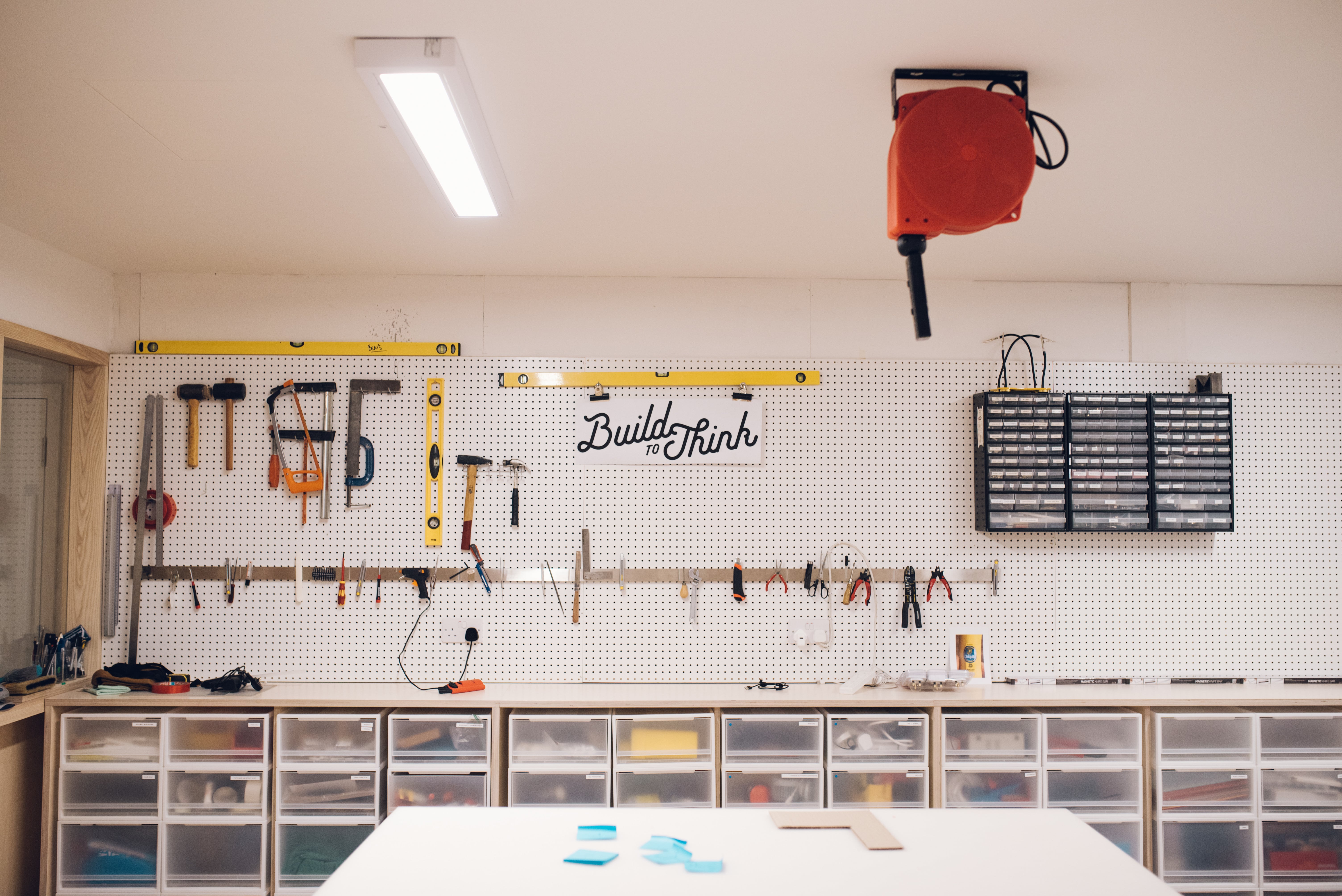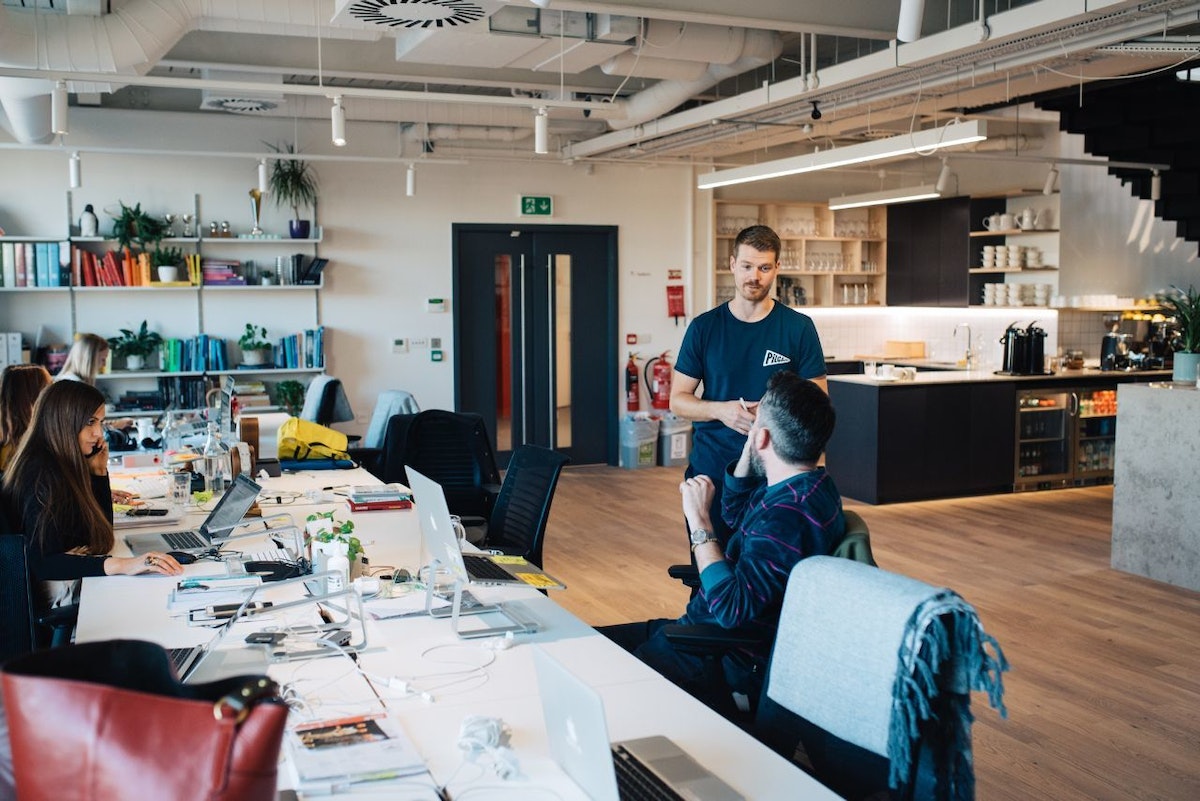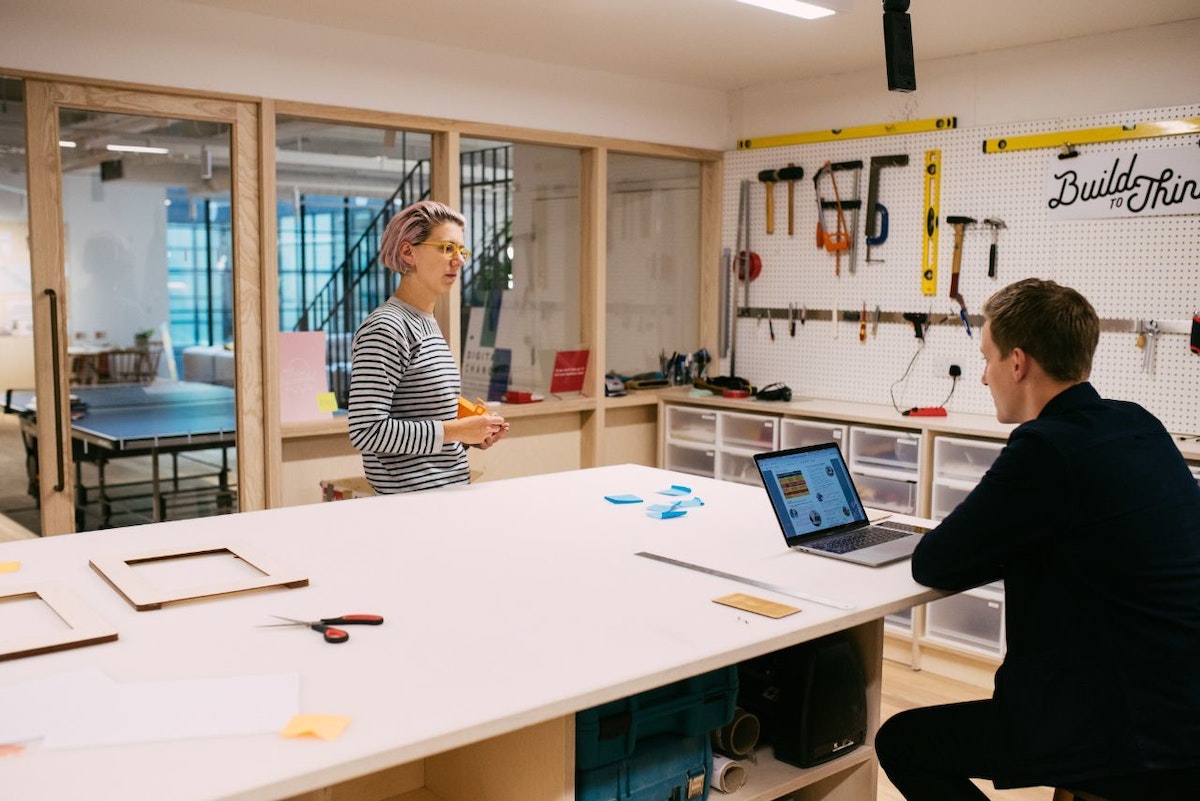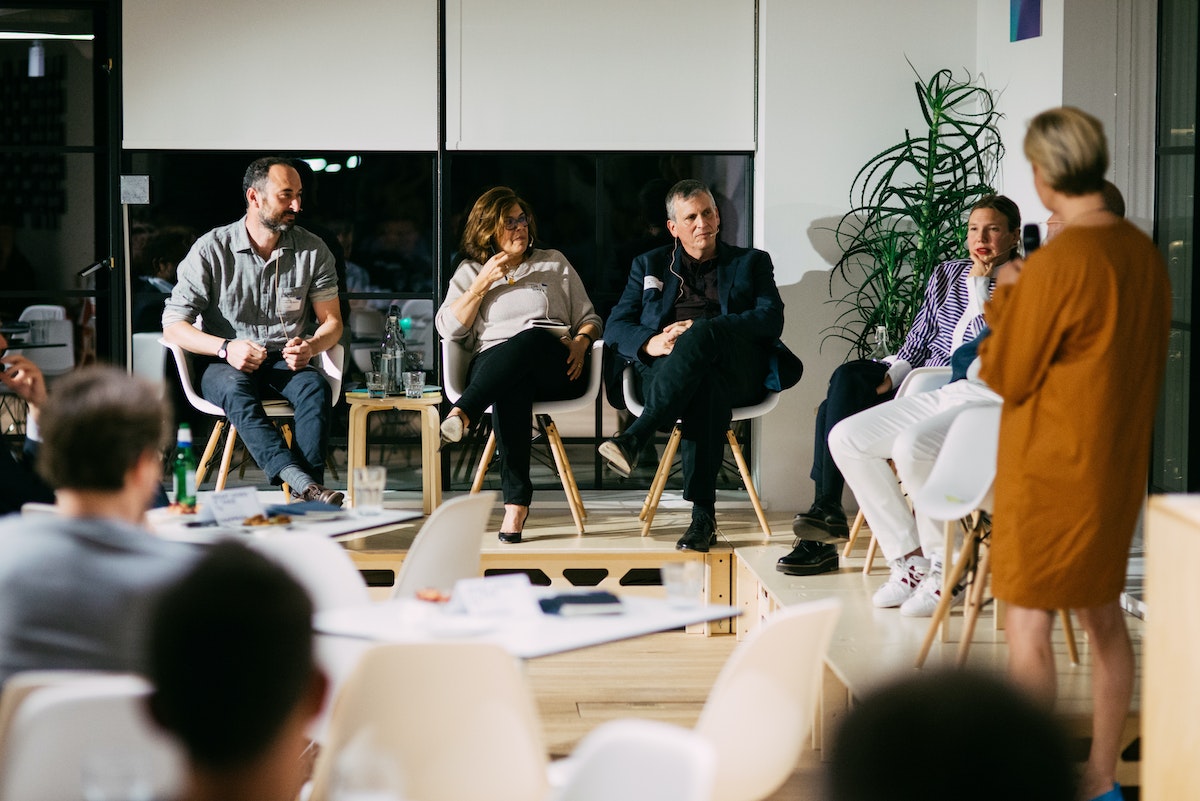How We Designed a Studio Space That Reflects Our Values

At IDEO, our values are the guideposts for everything that we do. And that commitment extends to our office spaces. As our London studio looked to create its new home, we envisioned an environment that embodies design and innovation, serves as a hub to welcome clients and visitors, and sets a tone for our employees to do their best work. And, as designers who work on projects that help shape the future, we also wanted to be sure that the design would be flexible enough to fit our needs and work for years to come.
As with any design challenge, we started by breaking the big question—what matters to us—into smaller questions. How could we bring the intimacy of our much smaller former office into this new space? How can we use our studio to bring diverse groups together, both within our office and in the broader community? And how do we celebrate our commitment to collaboration and making?
We created a list of priorities, and, together with our architects Feilden Fowles, found ways for our studio to reflect our values and support our work. Here’s a glimpse into what we focused on, and how it affected our design.
1. Focus on storytelling
The goal of the overall design was to create a natural flow through the new space that works as a design narrative, explaining how IDEO works and what it cares about—from that first view of the maker space to social gathering areas to projects and meeting rooms. The design is also open enough that it’s easy even for visitors to navigate without signs or a map.

“We wanted to showcase IDEO’s creative innovation on immediate arrival,” architect Fergus Feilden says. To that end, when visitors and employees walk in the door, they see a presentation wall with display niches that showcase the London studio’s work, as well as small meeting booths outfitted with pegboards for additional exhibitions. “We also brought forward the workshop into this area, and designed it to be as open as possible in order to immediately celebrate the making that takes place at the heart of IDEO’s design process,” he says.
2. Prioritize collaboration

Because our work is built on collaboration, it’s very important to us to provide teams with dedicated spaces they can make their own. We wanted these spaces to be open, flexible and inviting, and we purposely limited enclosed area to only those that are strictly necessary. Our work often entails not only helping to create a new product or venture, but building a team around it, so the spaces are meant to facilitate collaboration. “The layouts are fundamentally social, and even the divided rooms have glazed walls or windows to introduce natural light and maintain the ethos of transparency throughout,” Fergus says.
At the same time, because we often work on confidential client work, it’s important to be able to keep some projects private, so these spaces have been designed so that they can be closed off if necessary. Aside from the designated team spaces, there are also several break-out areas with soft furnishings or working tables for group meetings or individual workspace.
3. Talk less, do more

We wanted to make the workshop as accessible as any of the social spaces so that there are no barriers to making ideas tangible early. The idea is that you can walk directly from a meeting into the workshop and start building. It was designed to be neutral and understated—the life and color come over time from the projects and prototypes are teams are working on.
We’ve also limited meeting rooms to only two. When clients and partners come into our office, we don’t want them only to see the inside of a conference room. We want our teams to bring them into their work spaces instead. We also saw that many meeting rooms were actually mostly used for video calls with one or two people, so we put in phone booths that can fit up to four instead.
4. Embrace ambiguity
We know as well as anyone that a design that seems ideal today might not support the work we take on down the road. “A key part of the original brief was to allow a ‘loose-fit’ transition into the new space, and to provide a backdrop to IDEO’s creative process—not an over-designed space, and one that doesn’t shout,” Fergus says.

By keeping open space, making designed work areas extremely flexible, and making sure to maintain social spaces for everything from events to client dinners to casual coffee with coworkers, we’re keeping the doors open for all kinds of projects and functions. “In theory the whole studio is flexible to host different sorts of working including the coffee bar, dining and terrace spaces as well,” Fergus says.
Above all, though we wanted to create a space that our community could bring to life—the teams in our studio, the clients we work with, and members of our greater community. We’re a company founded on the idea of working with friends, and this space was built to enable that philosophy.

Words and art

Subscribe

.svg)







